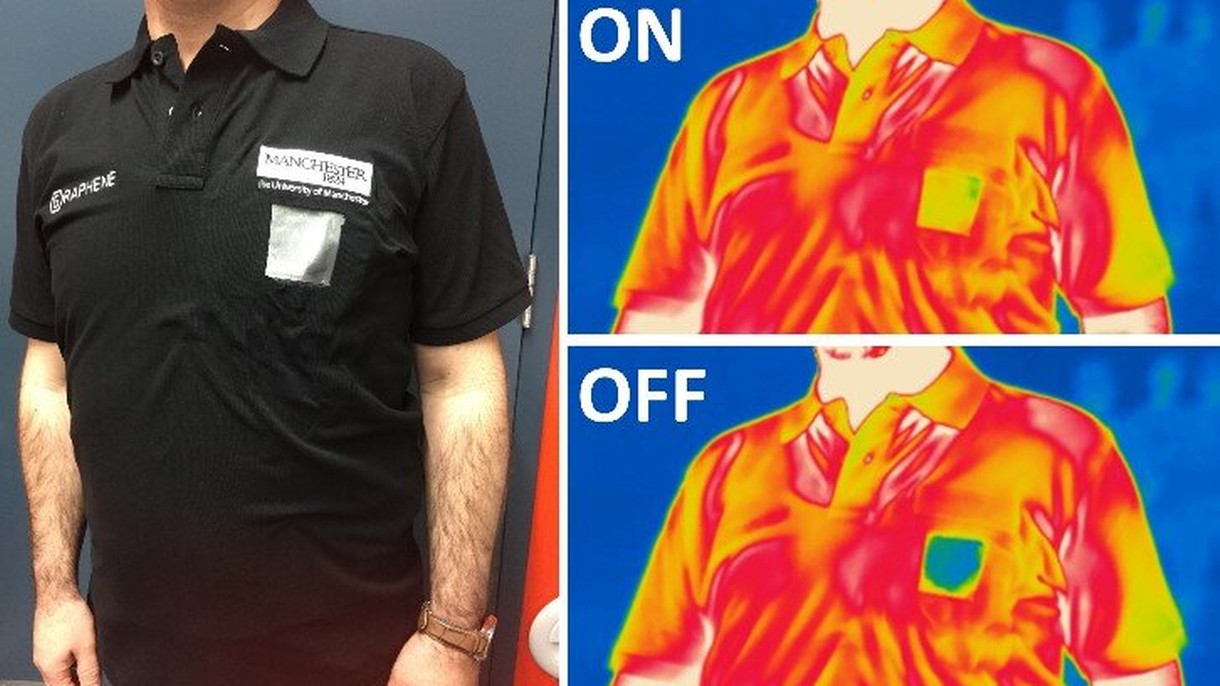Smart clothes with graphene as a recipe for hot weather?
Category : Technology
New research on two-dimensional material graphene has resulted in intelligent clothing that can lower a person's body temperature in a hot climate.
A group of scientists from the National Graphene Institute of the University of Manchester have created prototype graphene clothes to demonstrate dynamic control of thermal radiation in clothing, using the amazing thermal properties and elasticity of graphene. This study also opens the door to other applications, such as interactive infrared displays or hidden infrared communication in fabrics. Currently, it focuses on the use in lowering human body temperature, because in many places in the world temperatures reach such a level that functional clothing of this type is very much needed.
The key here is to create clothing transparent to infrared radiation, but at the same time you can also think about the use of graphene in the context of the cover that blocks the heat transfer of the body, such as rescue blankets. A team of scientists from Manchester presented a dynamic transition between these extreme states, electrically boosting the infrared emission capacity of graphene layers integrated with materials. It is worth emphasizing here that it was at this university in 2004 that one was able to isolate graphene with a thickness of one atom, which has potentially very wide commercial use in batteries, smartphones or accessories and training clothing.
 Vehicles from Tesla are technologically ahead of the competition by up to 6 years
Vehicles from Tesla are technologically ahead of the competition by up to 6 yearsIn this particular case, graphene layers are designed to control thermal radiation on clothing surfaces: “The ability to control thermal radiation is key for many other applications, such as managing body temperature in climates with extreme temperatures. Thermal blankets are, for example, a classic example of this use, however, maintaining this functionality when the environment is warming or cooling has been a huge hurdle. This effective demonstration of modulating optical properties on various materials could be a breakthrough in the creation of new technologies operating in infrared radiation and other areas of the electromagnetic spectrum for applications such as textile displays, communication, adaptive space suits or fashion'' says researcher Professor Coskun Kocabas.
The team ensures that such a graphene layer can be integrated with any material, e.g. cotton, which is why they presented the operation of their discovery using a cotton T-shirt that allows the wearer to send encoded messages invisible to the naked eye, but can be read by infrared cameras. The next step is to be dynamic temperature management for satellites orbiting our planet, which often experience extreme temperatures - if the team's research is successful, it will soon cease to be a problem, because on request it will be possible to control thermal radiation and regulate their temperature.
We sincerely congratulate the professor Coskun Kocabas and his team for their awesome job and research. Hopefully they will achieve their goals and continue to invent such a useful projects for us.



















